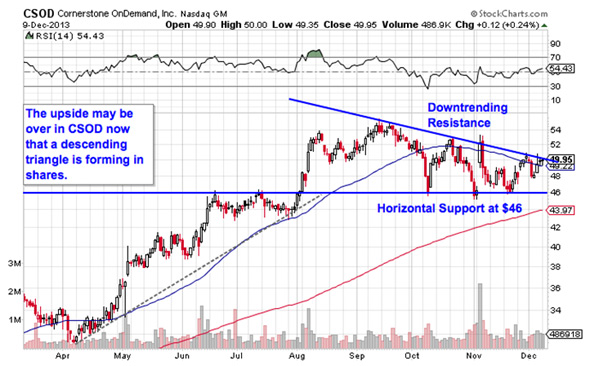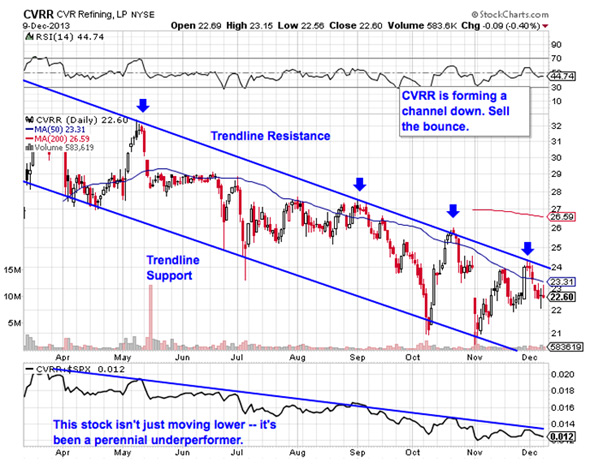Windstream (WIN) has an eye-propping dividend yield of 11.30% that should attracted many investors looking for high-dividend yield stocks. Windstream pays a higher dividend in comparison to its peers. In addition, stock has appreciated over 10% since the start of the year. Windstream offers voice and data network communications services in the U.S., competing against the likes of CenturyLink and Frontier Communications.
Windstream offers plenty of reasons to investors who can certainly pick the stock as the company continues to perform well in the market.
Improvements to note
Windstream expects concrete growth in its operational metrics while practicing aggressive marketing strategies throughout the year. Windstream expects adjusted free cash flow between $775 million and $885 million, while it expects its dividend payout ratio to be 68% to 78%. Besides, Windstream is executing various initiatives such as improving operational metrics, cost structure, dividend payout ratio, so as to improve its customer base that will probably help the company to provide more value to its share holders going forward.
The company looks set to improve its sales capabilities and productivity as it focuses on new sales enablement tools and enhanced analytics. Also, the company is investing in enterprise growth initiatives such as data centers and fiber expansion that will further assist the company to complement its sales in the years to come.
Apart from this, Windstream is taking various steps to unify its enterprise system that will enable its team and management to efficiently manage all aspects of customer life cycle from a unified platform. This centralized platform would certainly create efficiency as it will be monitoring different verticals such as sales, management, provision, billing, and customer support from single point. This strategy will help Windstream simplify and streamline its processes and provide efficient customer service, which should lead to growth in the bottom line in the future.
Investments
Furthermore, the company is investing heavily in its broadband expansion that will enhance its presence in the rural market. Also, its continuous focus on fiber-to-the-network and broadband network will fetch better results in the future, while the deployment of data centers to support cloud-based services should also assist Windstream to deliver better financial performance going forward.
Windstream is also engaged in enhancing its broadband coverage, surfing speed and ramping up its FTTT construction. The company plans to add 75,000 new broadband lines this year and this should be another growth driver for Windstream going forward.
Debt control and bottom line growth
Windstream is also working on ways to reduce its debt. It has a huge debt of $8.9 billion. In comparison, its cash position is small at just under $50 million. So, the reduction of debt is an important priority for Windstream. As a result, the fact that Windstream improved its balance sheet by refinancing around $4 billion in debt last year to extend debt maturities and lower cash interest expense should encourage investors.
Analyzing the competition
Frontier is making rapid strides in its business. Frontier's residential broadband market share was up in 84% of its markets last year. As a result, Frontier delivered a record 112,250 net broadband additions in 2013. Moreover, Frontier's customer retention initiatives are proving successful with a significant drop in customer churn rates last year. The company delivered a 61% improvement in residential customer retention year-over-year.
CenturyLink, on the other hand, is recording rapid growth in high-speed internet (HSI) and Prism TV customers. Last year, CenturyLink added 14,000 HSI customers and 69,000 Prism TV subscribers. More importantly, CenturyLink's fiber-connected towers are gaining good momentum as the company saw a huge 30% bump in their deployment in 2013.
Concluding remarks
Both Frontier and CenturyLink are making good progress, and Windstream needs to keep up its momentum to counter their threat in the long run. Looking at the moves that Windstream is making, there is a good probability that the company's performance would continue improving going forward. So, investors should definitely take a close look at Windstream for their portfolio.
| Currently 0.00/512345 Rating: 0.0/5 (0 votes) | |

Subscribe via Email

Subscribe RSS Comments Please leave your comment:
More GuruFocus Links
| Latest Guru Picks | Value Strategies |
| Warren Buffett Portfolio | Ben Graham Net-Net |
| Real Time Picks | Buffett-Munger Screener |
| Aggregated Portfolio | Undervalued Predictable |
| ETFs, Options | Low P/S Companies |
| Insider Trends | 10-Year Financials |
| 52-Week Lows | Interactive Charts |
| Model Portfolios | DCF Calculator |
RSS Feed  | Monthly Newsletters |
| The All-In-One Screener | Portfolio Tracking Tool |

MORE GURUFOCUS LINKS
| Latest Guru Picks | Value Strategies |
| Warren Buffett Portfolio | Ben Graham Net-Net |
| Real Time Picks | Buffett-Munger Screener |
| Aggregated Portfolio | Undervalued Predictable |
| ETFs, Options | Low P/S Companies |
| Insider Trends | 10-Year Financials |
| 52-Week Lows | Interactive Charts |
| Model Portfolios | DCF Calculator |
RSS Feed  | Monthly Newsletters |
| The All-In-One Screener | Portfolio Tracking Tool |
WIN STOCK PRICE CHART

9.69 (1y: +23%) $(function(){var seriesOptions=[],yAxisOptions=[],name='WIN',display='';Highcharts.setOptions({global:{useUTC:true}});var d=new Date();$current_day=d.getDay();if($current_day==5||$current_day==0||$current_day==6){day=4;}else{day=7;} seriesOptions[0]={id:name,animation:false,color:'#4572A7',lineWidth:1,name:name.toUpperCase()+' stock price',threshold:null,data:[[1370581200000,7.89],[1370840400000,8],[1370926800000,7.97],[1371013200000,8.09],[1371099600000,8.2],[1371186000000,8.31],[1371445200000,8.13],[1371531600000,8.09],[1371618000000,7.98],[1371704400000,7.8],[1371790800000,7.94],[1372050000000,7.84],[1372136400000,7.87],[1372222800000,7.65],[1372309200000,7.82],[1372395600000,7.71],[1372654800000,7.73],[1372741200000,7.69],[1372827600000,7.86],[1373000400000,7.9],[1373259600000,7.9],[1373346000000,7.98],[1373432400000,8.15],[1373518800000,8.125],[1373605200000,8.15],[1373864400000,8.02],[1373950800000,8.07],[1374037200000,8.15],[1374123600000,8.095],[1374210000000,8.095],[1374469200000,8.35],[1374555600000,8.17],[1374642000000,8.145],[1374728400000,8.1],[1374814800000,8.17],[1375074000000,8.28],[1375160400000,8.38],[1375246800000,8.36],[1375333200000,8.51],[1375419600000,8.59],[1375678800000,8.64],[1375765200000,8.57],[1375851600000,8.6],[1375938000000,8.24],[1376024400000,8.2],[1376283600000,8.34],[1376370000000,8.24],[1376456400000,8.23],[1376542800000,8.18],[1376629200000,8.13],[1376888400000,7.99],[1376974800000,8.08],[1377061200000,8],[1377147600000,8.06],[1377234000000,8.22],[1377493200000,8.2],[1377579600000,8.1],[1377666000000,8.045],[1377752400000,8.01],[1377838800000,8.07],[1378184400000,8.17],[1378270800000,8.25],[1378357200000,8.23],[1378443600000,8.26],[1378702800000,8.42],[1378789200000,8.49],[1378875600000,8.5],[1378962000000,8.495],[1379048400000,8.475],[1379307600000,8.5],[1379394000000,8.54],[1379480400000,8.565],[1379566800000,8.55],[1379653200000,8.48],[1379912400000,8.55],[1379998800000,8.61],[1380085200000,8.56],[1380171600000,8.19],[1380258000000,8.12],[1380517200000,7.99],[1380603600000,8.19],[1380690000000,8.17],[1380776400000,8.05],[1380862800000,8.02],[1381122000000,8.11],[1381208400000,8.11],[1381294800000,8.21],[1381381200000,8.395],[1381467600000,8.5],[1381726800000,8.52],[1381813200000,8.41],[138189! 9600000,8.541],[1381986000000,8.6],[1382072400000,8.6],[1382331600000,8.52],[1382418000000,8.57],[1382504400000,8.555],[1382590800000,8.55],[1382677200000,8.56],[1382936400000,8.59],[1383022800000,8.61],[1383109200000,8.52],[1383195600000,8.545],[1383282000000,8.54],[1383544800000,8.54],[1383631200000,8.51],[1383717600000,8.655],[1383804000000,8.165],[1383890400000,8.02],[1384149600000,8.06],[1384236000000,8.18],[1384322400000,8.28],[1384408800000,8.26],[1384495200000,8.25],[1384754400000,8.29],[1384840800000,8.33],[1384927200000,8.22],[1385013600000,8.22],[1385100000000,8.16],[1385359200000,8.06],[1385445600000,8.06],[1385532000000,8.09],[1385704800000,8.07],[1385964000000,8.07],[1386050400000,8.12],[1386136800000,8.25],[1386223200000,8.






 ) reported its third quarter earnings, posting results that beat analysts’ earnings and revenue expectations.
) reported its third quarter earnings, posting results that beat analysts’ earnings and revenue expectations.

 MORE GURUFOCUS LINKS
MORE GURUFOCUS LINKS  9.69 (1y: +23%) $(function(){var seriesOptions=[],yAxisOptions=[],name='WIN',display='';Highcharts.setOptions({global:{useUTC:true}});var d=new Date();$current_day=d.getDay();if($current_day==5||$current_day==0||$current_day==6){day=4;}else{day=7;} seriesOptions[0]={id:name,animation:false,color:'#4572A7',lineWidth:1,name:name.toUpperCase()+' stock price',threshold:null,data:[[1370581200000,7.89],[1370840400000,8],[1370926800000,7.97],[1371013200000,8.09],[1371099600000,8.2],[1371186000000,8.31],[1371445200000,8.13],[1371531600000,8.09],[1371618000000,7.98],[1371704400000,7.8],[1371790800000,7.94],[1372050000000,7.84],[1372136400000,7.87],[1372222800000,7.65],[1372309200000,7.82],[1372395600000,7.71],[1372654800000,7.73],[1372741200000,7.69],[1372827600000,7.86],[1373000400000,7.9],[1373259600000,7.9],[1373346000000,7.98],[1373432400000,8.15],[1373518800000,8.125],[1373605200000,8.15],[1373864400000,8.02],[1373950800000,8.07],[1374037200000,8.15],[1374123600000,8.095],[1374210000000,8.095],[1374469200000,8.35],[1374555600000,8.17],[1374642000000,8.145],[1374728400000,8.1],[1374814800000,8.17],[1375074000000,8.28],[1375160400000,8.38],[1375246800000,8.36],[1375333200000,8.51],[1375419600000,8.59],[1375678800000,8.64],[1375765200000,8.57],[1375851600000,8.6],[1375938000000,8.24],[1376024400000,8.2],[1376283600000,8.34],[1376370000000,8.24],[1376456400000,8.23],[1376542800000,8.18],[1376629200000,8.13],[1376888400000,7.99],[1376974800000,8.08],[1377061200000,8],[1377147600000,8.06],[1377234000000,8.22],[1377493200000,8.2],[1377579600000,8.1],[1377666000000,8.045],[1377752400000,8.01],[1377838800000,8.07],[1378184400000,8.17],[1378270800000,8.25],[1378357200000,8.23],[1378443600000,8.26],[1378702800000,8.42],[1378789200000,8.49],[1378875600000,8.5],[1378962000000,8.495],[1379048400000,8.475],[1379307600000,8.5],[1379394000000,8.54],[1379480400000,8.565],[1379566800000,8.55],[1379653200000,8.48],[1379912400000,8.55],[1379998800000,8.61],[1380085200000,8.56],[1380171600000,8.19],[1380258000000,8.12],[1380517200000,7.99],[1380603600000,8.19],[1380690000000,8.17],[1380776400000,8.05],[1380862800000,8.02],[1381122000000,8.11],[1381208400000,8.11],[1381294800000,8.21],[1381381200000,8.395],[1381467600000,8.5],[1381726800000,8.52],[1381813200000,8.41],[138189! 9600000,8.541],[1381986000000,8.6],[1382072400000,8.6],[1382331600000,8.52],[1382418000000,8.57],[1382504400000,8.555],[1382590800000,8.55],[1382677200000,8.56],[1382936400000,8.59],[1383022800000,8.61],[1383109200000,8.52],[1383195600000,8.545],[1383282000000,8.54],[1383544800000,8.54],[1383631200000,8.51],[1383717600000,8.655],[1383804000000,8.165],[1383890400000,8.02],[1384149600000,8.06],[1384236000000,8.18],[1384322400000,8.28],[1384408800000,8.26],[1384495200000,8.25],[1384754400000,8.29],[1384840800000,8.33],[1384927200000,8.22],[1385013600000,8.22],[1385100000000,8.16],[1385359200000,8.06],[1385445600000,8.06],[1385532000000,8.09],[1385704800000,8.07],[1385964000000,8.07],[1386050400000,8.12],[1386136800000,8.25],[1386223200000,8.
9.69 (1y: +23%) $(function(){var seriesOptions=[],yAxisOptions=[],name='WIN',display='';Highcharts.setOptions({global:{useUTC:true}});var d=new Date();$current_day=d.getDay();if($current_day==5||$current_day==0||$current_day==6){day=4;}else{day=7;} seriesOptions[0]={id:name,animation:false,color:'#4572A7',lineWidth:1,name:name.toUpperCase()+' stock price',threshold:null,data:[[1370581200000,7.89],[1370840400000,8],[1370926800000,7.97],[1371013200000,8.09],[1371099600000,8.2],[1371186000000,8.31],[1371445200000,8.13],[1371531600000,8.09],[1371618000000,7.98],[1371704400000,7.8],[1371790800000,7.94],[1372050000000,7.84],[1372136400000,7.87],[1372222800000,7.65],[1372309200000,7.82],[1372395600000,7.71],[1372654800000,7.73],[1372741200000,7.69],[1372827600000,7.86],[1373000400000,7.9],[1373259600000,7.9],[1373346000000,7.98],[1373432400000,8.15],[1373518800000,8.125],[1373605200000,8.15],[1373864400000,8.02],[1373950800000,8.07],[1374037200000,8.15],[1374123600000,8.095],[1374210000000,8.095],[1374469200000,8.35],[1374555600000,8.17],[1374642000000,8.145],[1374728400000,8.1],[1374814800000,8.17],[1375074000000,8.28],[1375160400000,8.38],[1375246800000,8.36],[1375333200000,8.51],[1375419600000,8.59],[1375678800000,8.64],[1375765200000,8.57],[1375851600000,8.6],[1375938000000,8.24],[1376024400000,8.2],[1376283600000,8.34],[1376370000000,8.24],[1376456400000,8.23],[1376542800000,8.18],[1376629200000,8.13],[1376888400000,7.99],[1376974800000,8.08],[1377061200000,8],[1377147600000,8.06],[1377234000000,8.22],[1377493200000,8.2],[1377579600000,8.1],[1377666000000,8.045],[1377752400000,8.01],[1377838800000,8.07],[1378184400000,8.17],[1378270800000,8.25],[1378357200000,8.23],[1378443600000,8.26],[1378702800000,8.42],[1378789200000,8.49],[1378875600000,8.5],[1378962000000,8.495],[1379048400000,8.475],[1379307600000,8.5],[1379394000000,8.54],[1379480400000,8.565],[1379566800000,8.55],[1379653200000,8.48],[1379912400000,8.55],[1379998800000,8.61],[1380085200000,8.56],[1380171600000,8.19],[1380258000000,8.12],[1380517200000,7.99],[1380603600000,8.19],[1380690000000,8.17],[1380776400000,8.05],[1380862800000,8.02],[1381122000000,8.11],[1381208400000,8.11],[1381294800000,8.21],[1381381200000,8.395],[1381467600000,8.5],[1381726800000,8.52],[1381813200000,8.41],[138189! 9600000,8.541],[1381986000000,8.6],[1382072400000,8.6],[1382331600000,8.52],[1382418000000,8.57],[1382504400000,8.555],[1382590800000,8.55],[1382677200000,8.56],[1382936400000,8.59],[1383022800000,8.61],[1383109200000,8.52],[1383195600000,8.545],[1383282000000,8.54],[1383544800000,8.54],[1383631200000,8.51],[1383717600000,8.655],[1383804000000,8.165],[1383890400000,8.02],[1384149600000,8.06],[1384236000000,8.18],[1384322400000,8.28],[1384408800000,8.26],[1384495200000,8.25],[1384754400000,8.29],[1384840800000,8.33],[1384927200000,8.22],[1385013600000,8.22],[1385100000000,8.16],[1385359200000,8.06],[1385445600000,8.06],[1385532000000,8.09],[1385704800000,8.07],[1385964000000,8.07],[1386050400000,8.12],[1386136800000,8.25],[1386223200000,8.
 Economist Alan Blinder: First quarter was "catastrophically bad" for the U.S. economy.
Economist Alan Blinder: First quarter was "catastrophically bad" for the U.S. economy. 

